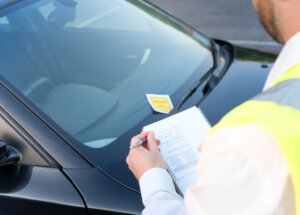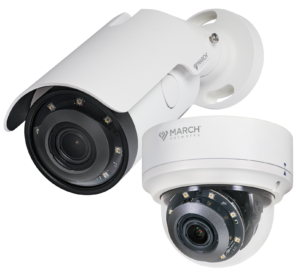When Using AI, Think Application First to Best Benefit Your Business
Filed under: IP Cameras, Analytics
In the last few years, Artificial Intelligence (AI) has become a buzzword in many industries, including the physical security industry. Analytics powered by AI have propelled video surveillance into a new era of data analysis. The proliferation of intelligent analytics has occurred for good reason: they help solve many problems, uncover valuable business insights, and reduce the time it takes to find relevant video evidence.
AI-powered analytics achieve greater accuracy than any previous generation of video analytics by using machine learning and Deep Neural Networking (DNN) algorithms to analyze scenes and detect objects. The algorithms are trained to detect specific objects, such as people, animals, and vehicles, using neural networking. With the continuous learning done by AI analytics, the precision and performance can actually increase over time, resulting in much greater accuracy of detection and, as a result, fewer false alarms.
While AI can be applied to almost infinite scenarios, when it comes to video surveillance, it’s best used strategically to ensure it delivers the accuracy required. This means asking yourself important questions including, “what problem am I trying to solve?” and “how will AI be applied practically to the situation to solve this issue?”
That’s exactly what we did with a large quick-service restaurant (QSR) customer of ours earlier this year. The customer was using our AI-enabled ME6 Series IP Cameras, and, specifically, the stopped vehicle analytic offered by these devices.
The stopped vehicle analytic is designed to alert in real time when vehicles are stationary in a defined zone for longer than a user-defined time allows. Essentially, it detects when a vehicle sits idle for too long in a no-parking or waiting zone.
Like many retailers, our QSR customer was seeing an uptick in demand for its drive-through and curbside pick-up services due to COVID-19. It had to quickly adapt to make its services more efficient and effective for customers. So, we worked with the QSR to ensure our stopped vehicle analytic gathered the information it needed. We enhanced the analytic to create specific identifiable alerts when cars were in parallel parking spots. We also trained the analytic to ignore cars driving from left to right or vice versa, because our customer wanted only alerts about vehicles parked in spaces designated for curbside delivery.
The stopped vehicle analytic can now identify up to six cars in a parking lot and instantly notify users when a vehicle is parked for a set amount of time. For our QSR customer, this means staff members receive real-time visual alerts about customers arriving to pick up their mobile orders. When a customer arrives, the employees are notified and can bring out the appropriate order. Our customer can also customize the type of notification, which can be as simple as a video appearing in a public view monitor in the vestibule, or a text or email notification to staff with a video image of the car and where it’s positioned. Furthermore, the full solution provides a visual record of all curbside deliveries for future review and investigation.
Using the analytic to enforce parking bylaws
Conveniently, this analytic can also help businesses outside of the retail/QSR space.

The stopped vehicle analytic helps enforcement offers do their jobs more effectively and efficiently, which potentially helps to decrease the chances of collisions happening.
Another strategic application of the stopped vehicle analytic is for parking-bylaw enforcement. IP cameras embedded with the analytic can be used to detect vehicles parked illegally and automatically send an alert to enforcement personnel. Not only does this help municipalities collect more fees for parking violations, it also helps commuters, as illegally parked vehicles can pose a number of potential threats by increasing the chances of a collision occurring.
For example, if a vehicle is improperly parked in front of a bus stop, the bus might have to stop in the middle of the road. This not only slows traffic, but vehicles may pass it improperly, thereby increasing the risk of an accident.
Another example is a vehicle inappropriately parked in spaces dedicated to ambulances or other first-responder vehicles, which could actually endanger the lives of those they are attempting to tend to. Using a surveillance solution that includes IP cameras embedded with the stopped vehicle analytic and sophisticated analytics software, law enforcement can be automatically alerted and resolve the situation immediately, before any harm comes of it.
It’s clear the use of AI technology in the video surveillance industry is proving to be a game changer. In order to reap the greatest benefits from the technology, however, it’s imperative to familiarize yourself with the analytics’ capabilities and how they can be applied strategically to help your business.
Have a business problem you are trying to solve? Chances are there is a video and/or AI-powered data analytic that can help. Feel free to contact us so we can work on it together.
